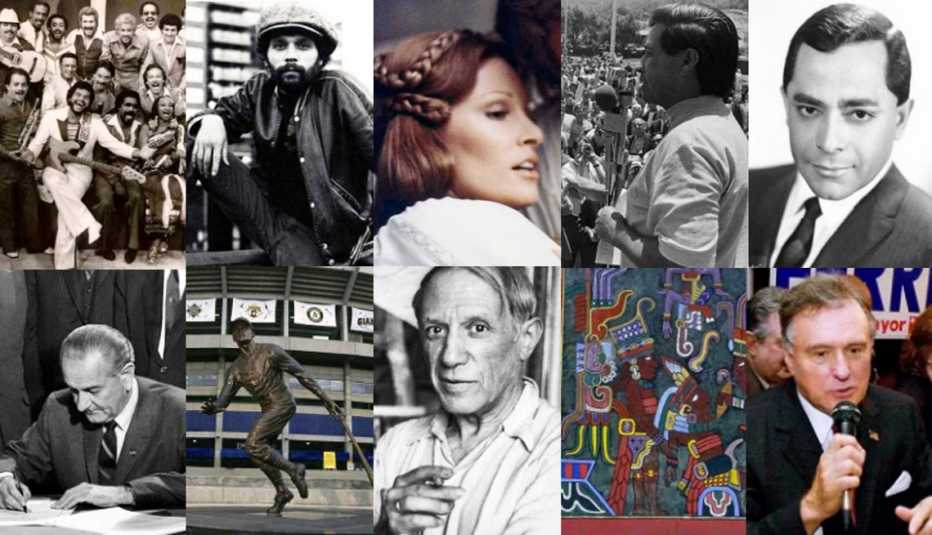AARP Hearing Center


The U.S. Hispanic population numbered 63.7 million in July 2022, according to the latest census data. At 19.1 percent of the country’s total population, Latinos make up nearly one in five people in the United States and are the nation’s largest ethnic minority, wielding $3.2 trillion in economic clout in 2021, according to a new report by the Latino Donor Collaborative.
Fifty years ago, there were less than 10 million people of Hispanic origin in the United States. The U.S. census didn’t start asking about Hispanic ancestry until 1970, and the Congressional Hispanic Caucus would not be founded until 1976. Clearly, a lot has changed since then.
Let’s travel 50 years back in time and take a look at what was happening in the world of U.S. Latinos in 1973.
1. Changes in bilingual education


Despite great progress in the 1960s toward ending discrimination and segregation in public schools, the influx of immigrants — mainly from Mexico — resulted in large numbers of students who were not proficient in English and, as a result, did not obtain a solid education. The 1968 Bilingual Education Act was passed to provide federal funds to make teaching more effective, but in the years that followed, budget cuts made it hard to implement quality educational programs.
Education policies were amended in 1973 to expand access to bilingual education, and Congress passed the Equal Educational Opportunities Act of 1974, which provided a framework for bilingual instruction as part of government-funded education.
2. Miguel Piñero writes 'Short Eyes'


Puerto Rican playwright Miguel Piñero wrote Short Eyes, a gritty play based on his experiences as an inmate in New York prisons. It won the New York Drama Critics’ Circle Award and an Obie Award in 1974. While Latinos in the United States were gaining visibility, the Latin American literary boom continued with outstanding works by Argentine writer Julio Cortázar (his fourth novel, Libro de Manuel, later translated to English as A Manual for Manuel) and Mario Vargas Llosa of Peru (the fiercely satirical Pantaleón y las Visitadoras, published in English as Captain Pantoja and the Special Service).
3. Roberto Clemente elected to the Baseball Hall of Fame


On Dec. 31, 1972, Puerto Rican baseball star Roberto Clemente died in a plane crash as he was en route to Nicaragua to deliver humanitarian aid. He was 38 years old. A few months later, Clemente was inducted into the Baseball Hall of Fame, the first Latino player to receive this honor. The number of Latinos in Major League Baseball continued to rise over the decades; currently, 30.2 percent of MLB players are of Hispanic origin.
4. Miami is declared a bilingual city


With its sizable Cuban community, Miami was officially declared a bilingual city in 1973. That same year, Maurice Ferré — a Puerto Rican–born politician and University of Miami graduate — became the city’s first Hispanic mayor. He remained in office until 1985. Today, 72 percent of Miami’s population is of Hispanic origin, and 67 percent speak Spanish at home.
5. César Chávez fights for farmworkers


During the Great Depression, the family of César Chávez , the future founder of the United Farm Workers union, lost their farm in Arizona and were forced to work in the fields of California. This experience inspired Chávez to advocate for farmworkers’ rights in the United States, using aggressive but nonviolent tactics. In 1968, he staged a 25-day hunger strike to protest violence against farmworkers. He went on another hunger strike in 1972, and in 1973, he organized a boycott of lettuce and grapes. This led to the passage of the historic California Agricultural Labor Relations Act of 1975.
6. Death of Tito Rodríguez


On Feb. 28, 1973, just days after appearing in Madison Square Garden with his fellow musician Machito, Puerto Rican singer and bandleader Tito Rodríguez died of leukemia. He was only 50. Born in Santurce, Puerto Rico, and blessed with a stunningly versatile voice that allowed him to perform both boleros and dance tunes, Rodríguez was a major figure in New York City’s golden age of mambo in the 1950s, with the Palladium Ballroom at the epicenter. His musical legacy includes dozens of outstanding recordings.


































































More From AARP
Introducing ‘Somos AARP’ for Hispanic Heritage Month
Learn more about the organization’s nationwide initiative28 Noteworthy Movies About the Hispanic American Experience
These films offer a look at how Latinos have enriched U.S. culture and history